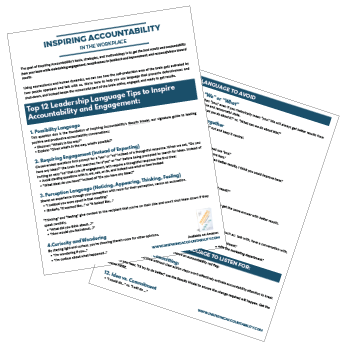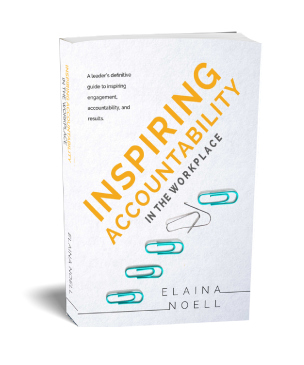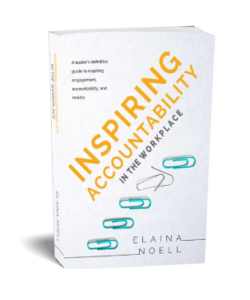
How to Inspire Your Team
Three Easy Brain-Based Tips You Can Use Immediately
- What do you hope being more inspired will do for your employees?
- What do you hope them being more inspired will do for you or your company or clients?
Common answers include that employees would be more engaged, enjoy their work more, and be more loyal.
And these three wins mean that you will see optimal effort, more initiative, improved productivity. All wins for your clients and company’s bottom line.
But why would an employee be compelled to be more engaged? What can leaders do to help them enjoy their work more?
You can design a more optimal culture to support these efforts. It all starts with understanding how the brain is motivated to engage in work and how it classifies different tasks as enjoyable- or not.
The Brain’s Role in Inspiration
Simply put, the brain loves recognition for meaningful contributions. The brain releases feel-good dopamine when we get a sense of “I did it!” and serotonin when someone acknowledges us with some form of “you did it!”
After those neurochemicals fade off, the brain is hungry for more. But if we don’t expect recognition (neglected), or worse, if we expect to be criticized, we have little incentive (or inspiration) to do more than the minimum. And often, this ends up being a little less than the minimum as subconscious resentment builds. Employees must have hope for either self-recognition (a feeling of satisfaction) or recognition by our leader, the latter usually being the most incentivizing and inspiring.
If you want to inspire accountability, you must work with what makes us human to get better results. Let’s look at how we can do that by exploring a breakdown of the most common synonyms of accountability in the workplace, and then we’ll look at better solutions to get improve employee performance.
Our Human Needs in the Workplace
But what motivates the brain to release those neurochemicals? Our three top human needs in the workplace: the need to be seen as contributing, competent, and important.
It’s that simple – increase the opportunities to be seen as and recognition for contributing, competent, and important.
How to Inspire Your Team
Here are three of Inspiring Accountability’s easiest ways to acknowledge our top three needs:
1. Add Contribution Context when presenting a new task:
Any boring or menial task can become incentivizing to the brain when we connect with why it matters and to what or whom. Understanding our genuine contribution activates the promise of dopamine and serotonin, which engages the brain to be more inspired to engage in a task. When you share a new task, include why it’s meaningful. If a task is worth doing, there’s contribution context to be communicated. To whom or what does the employee’s effort contribute to helping? Your chance of over-communicating the value of what an employee does is almost zero.
Example: Can you please compile that data into an excel sheet? It will be a huge help to the Product Innovation Team, which is preparing to make product adjustments this week to improve our best-selling product!
Example: Can you please reduce the flyer to make it two pages? I noticed our department is over-budget and this change will help us save some money.
Example: Can you please prioritize this project and get back on track? Your leadership will really help us be sure we get the engineering team what they need on time so they can get updates to the customer on time!
These hypothetical examples might be a little… lackluster. What matters is that you begin to notice how often you make a new request or assign a task without including why it matters or whom it positively impacts. When you incorporate contribution context more regularly, employees will start to feel an uptick in their inspiration and engagement.
2. Recognition with contribution context:
As stated in our book Inspiring Accountability in the Workplace (2019), “If we expect a positive result from our effort, we are eager to engage. If we expect a negative result from our effort, we are less inspired to engage.” Employees are mostly informed of what is considered a positive or negative result based on your feedback. When you provide better recognition, especially when tying it to their effort instead of the result, and you include contribution context, you’ve just offered a powerful motivator to the brain to keep doing that.
Recognition can be a simple “thank you, great job.” But when you add one sentence about why the effort mattered, or that “marketing can now include these stats in our sales reports – our CEO will be so pleased!”
3. Ask about what contributions they are most proud of for the week:
This framework helps you understand what your employee values about what they do. You’ll also learn what kind of recognition is most important to them. You’ll probably often hear that it’s about some form of effort or challenge that leads to problem-solving (“I did it”) or something they felt contributed especially meaningfully (“you did it”).
There you have it!
Three easy tips on how to inspire your team you can start doing immediately! Challenge yourself in your next interaction with your team to employ these immediately to boost inspiration, engagement, and results!
GET ACCESS TO OUR BEST TIPS
Download our Top 12 Leadership Language Tips to Inspire Accountability and Employee Engagement



